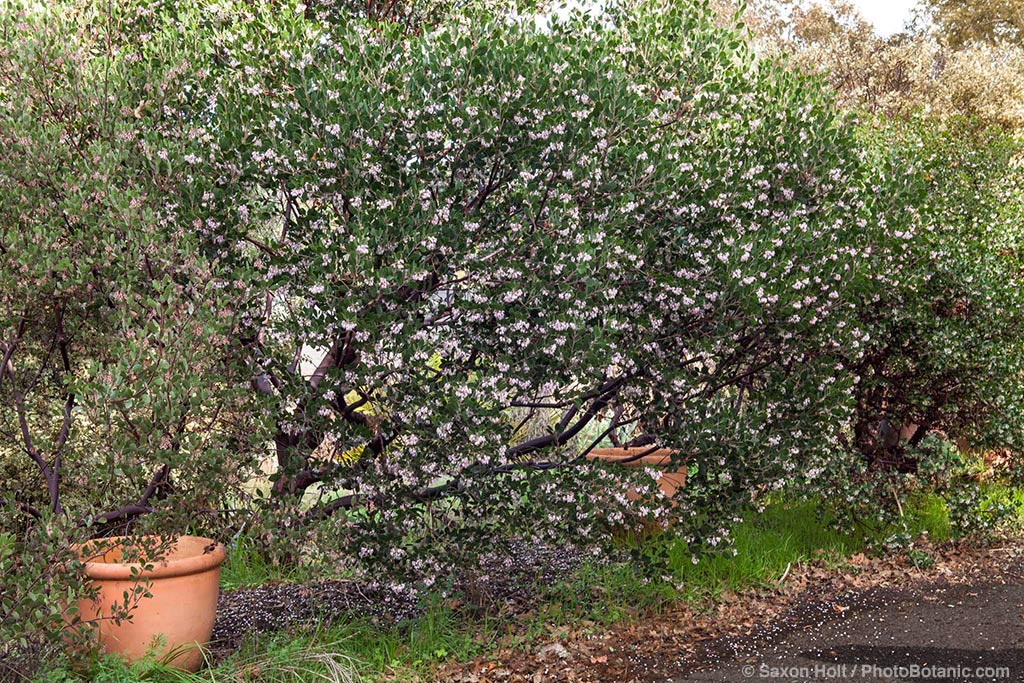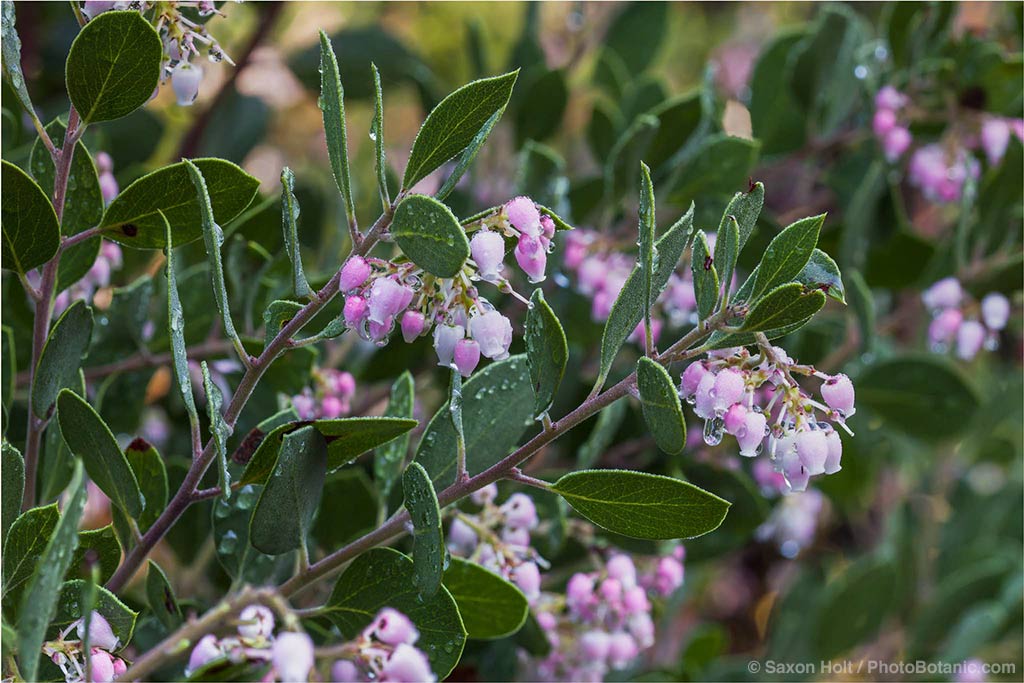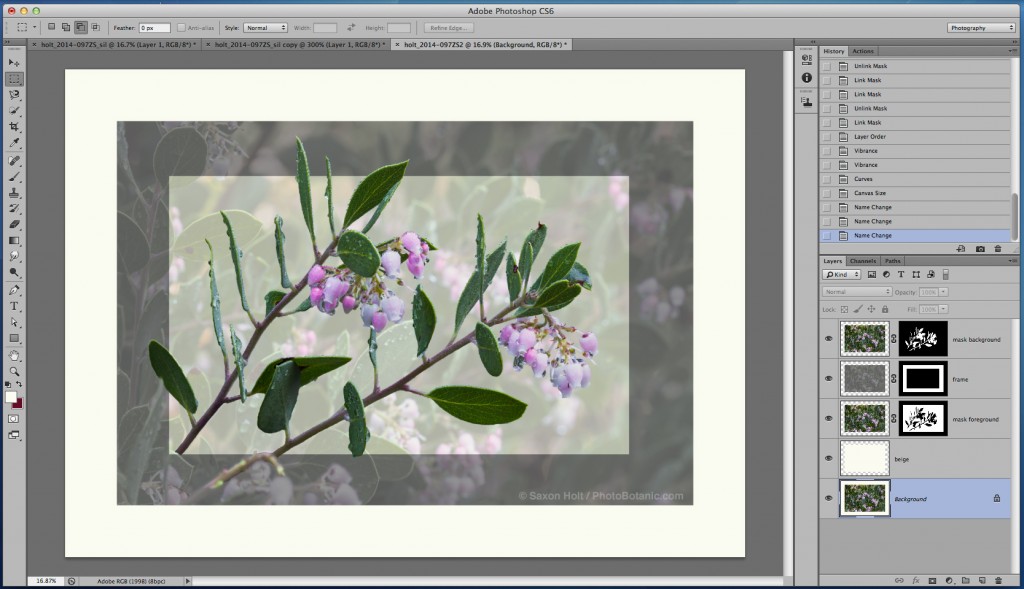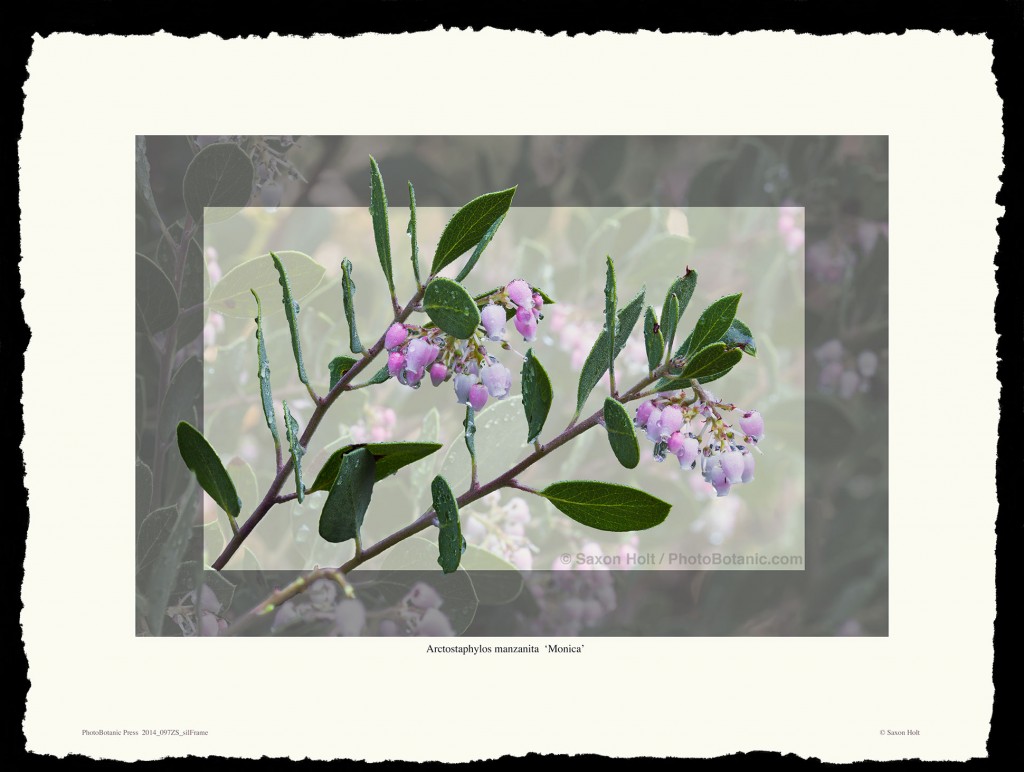So, so many reasons to celebrate this manzanita on this rainy day.
Mostly the rain itself. We have had so little this winter that every drop is a relief. The garden’s spirit jumped up, as did mine, with the recent soaking rains. Our summer-dry climate should mean winter-wet but not this year of record little rainfall. So every wet day is a celebration.
And just in time for the peak bloom of the Arctostaphylos in the shrub border. Just in time to experiment with a new photo technique.
I have been making PhotoBotanic illustrations ever since the Smith & Hawken rose books. That series was done with studio lights on white countertops I lugged around the West Coast, Redouté stickers affixed to my Bronica camera case. Now I can make the plant illustrations in the garden, extracting the key element from the background as a cutout silhouette.
Recently I experimented with leaving traces of the background in the print. In Camellia ‘Tulip Time’ I let one bright pink flower stand out from the rest of the branch. Now I want the illustration to reach out of its frame, trying to create a feeling of three dimensions. Thank you to Seurat for suggesting this in “Evening, Honfeur” with its wooden frame hand-painted with the same impressionist technique to the extend of the image past its boundaries.
For this new technique I wanted to have an image with great sharpness and maximum depth of field. This is done as a focus stack with multiple frames of the same image with very subtle changes in focus. The computer then merges all the frames into one very sharp file with a software tool called Zerene Stacker.
As my favorite manzanita ‘Monica’ came into bloom, I waited for the perfect day of fully opened flowers and quiet soft light. The slightest breeze will upset the focus stack technique. The morning after the recent storm was dead still, raindrops still unshaken from the glistening shrub.
I only need 6 frames to get the two branches in sharp focus for the stack, then set to work in Photoshop to cutout the branches. The process with Photoshop’s selection tools is tedious. I want clean edges so the print can be enlarged to 20 x 30 so there are few shortcuts or refinements I can use in the digital toolbox.
Once I isolate the branches I can create 2 layer masks to control the the background and foreground of the illustration. First I enlarge the overall canvas with an off white “paper” layer that will be part of the final print. When the main photo is placed onto that beige layer, reduced in opacity and saturation, it fades and blends into the paper.
Then when I make the frame to overlay the faded background I can control its opacity too. The background becomes part of the frame, enhancing the environment of the illustration.
To be quite honest, not knowing exactly how to juxtapose the various layers, I played and played with the elements until, quite suddenly the final combination snapped into view. An amazing plant, a wonderful rain, and quite morning, an idea to explore, and lots of computing power. A celebration of serendipity.
Prints for sale in the Store.












Leave A Comment